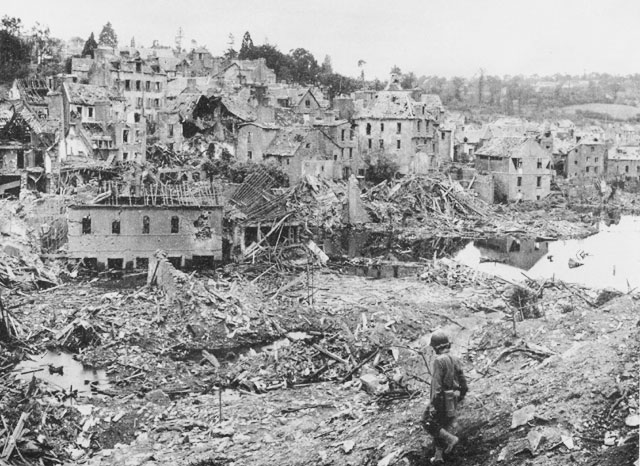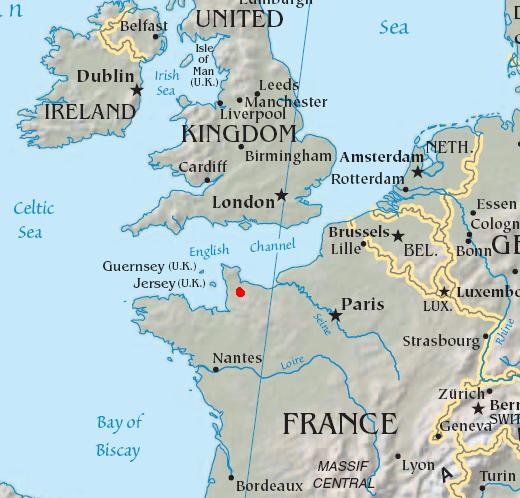STLO (Saint Lo)
French
city almost totally destroyed during the Battle of Normandy
Common
clues: Normandy town; WWII battle locale; D-Day town; French town
of WWII fame; 1944 battle site; Town near Caen; Manche's
capital
Crossword
puzzle frequency:
3 times a year
Video: The
War Photography of Rodger Hamilton
"You are about to embark upon the great crusade toward which we have striven these many months. The eyes of the world are upon you...I have full confidence in your courage, devotion to duty and skill in battle." ~ Gen Dwight D Eisenhower
Saint-Lô is a commune in north-western France, the capital of the Manche department in the region of Normandy.
Although it is the second largest city of Manche after Cherbourg, it remains the prefecture of the department. It is also chef-lieu of an arrondissement and two cantons (Saint-Lô-1 and Saint-Lô-2).
The commune has 18,931 inhabitants who are called Saint-Lois(es). The names of Laudois(es), Laudien(ne)s or Laudinien(ne)s are also cited. A martyr city of World War II, Saint-Lô was decorated with the Legion of Honour in 1948 and was given the nickname "Capital of the Ruins", a phrase popularised by Samuel Beckett.
Originally called Briovère (meaning "Bridge on the Vire River" in Gaulish), the town is built on and around ramparts. Originally it was a Gaul fortified settlement. The name "Saint-Lô", known since the 8th century, originates from Saint Laud, bishop of Coutances in 525–565, who had a residence here. According to tradition, the town received a new line of walls from Charlemagne in the early 9th century. It was sacked by the Vikings in 890. Later it flourished under the bishop Geffroy de Montbray, who built here a bridge and some mills.
Saint-Lô was the third largest town in the Duchy of Normandy after Rouen and Caen, and became part of France in 1202. In the 13th century it was home to numerous craftsmen, and in 1234 a guild of tailors was established in it. In 1275 it received from King Philip III of France the right to coin, which it maintained until 1693.

During the Hundred Years War it was sacked by the English, and in 1347 it was struck by plague. In 1378 it returned to France, but was again under England from 1418 to 1449. Saint-Lô suffered notably during the Wars of Religion: in 1562 it was captured by the Huguenots and became a Protestant stronghold; in 1574 it was besieged and partly destroyed by royal troops under Marshal de Matignon. Two years later the seigneury of the bishops of Coutances over the town ceased forever. In the mid-17th century part of the walls were destroyed, and the town grew with a new borough known as Neufborg. After the revocation of the edict of Nantes (1685), most of its craftsmen abandoned Saint-Lô.
In 1795 it became capital of the Manche department. In 1858 it was reached by the Paris-Cherbourg railway.
This article is licensed under the GNU Free Documentation License. It uses material from the Wikipedia article "Saint-Lo”.
|
|
